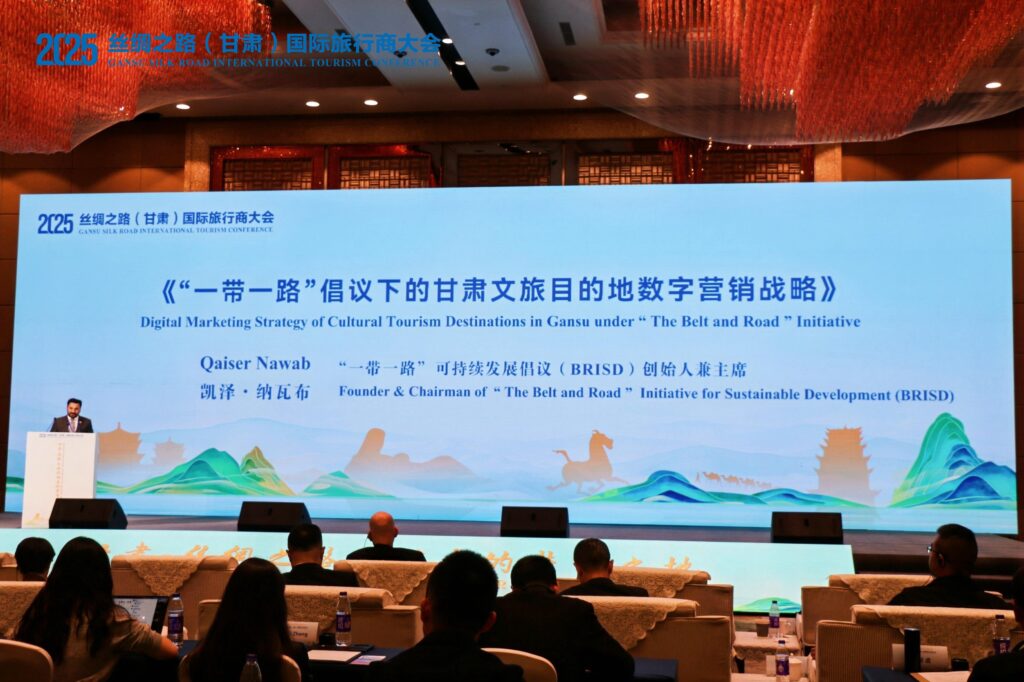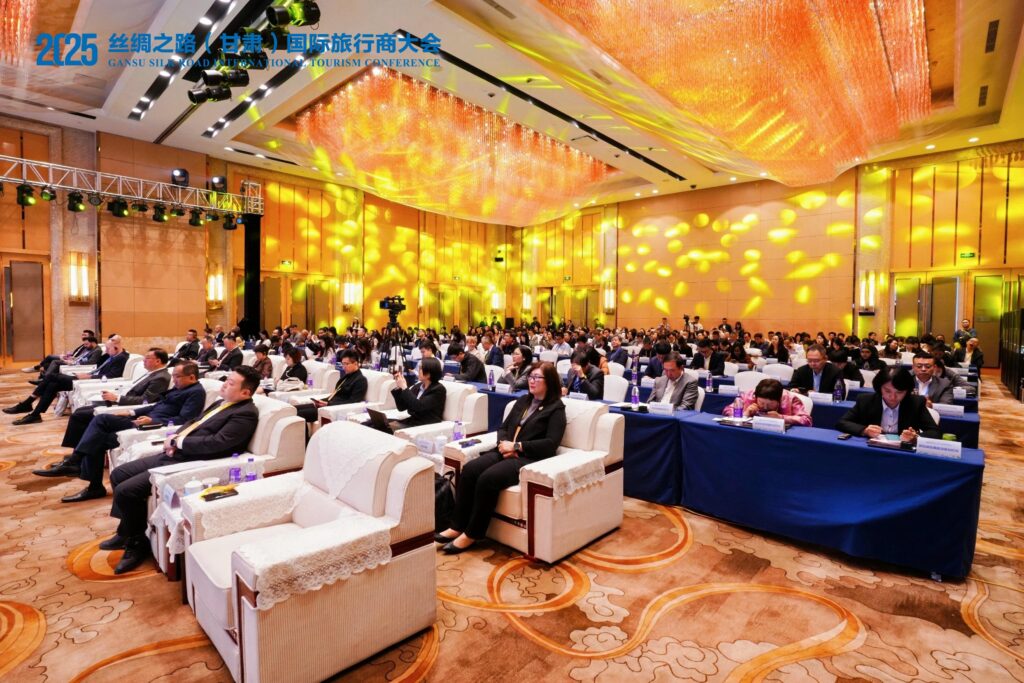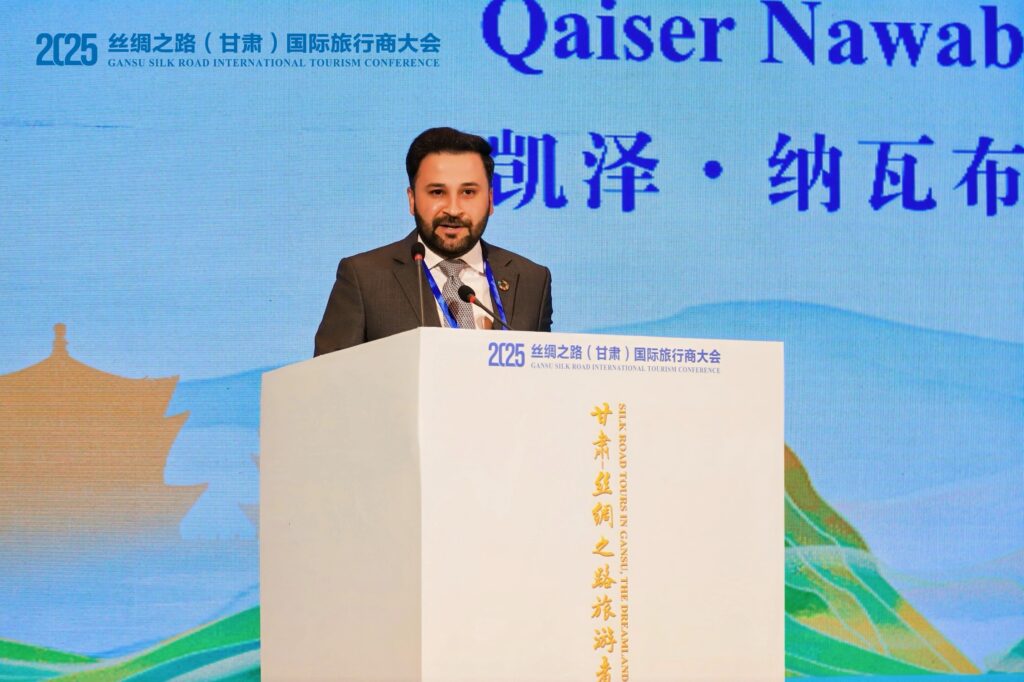Gansu, China – Mr. Qaiser Nawab, Chairman of the Belt and Road Initiative for Sustainable Development (BRISD), participated as the Guest of Honour and delivered a keynote speech on “The Role of Digital Marketing in Promoting Cultural Tourism in Gansu under the Belt and Road Initiative (BRI)” at the 2025 Gansu Silk Road International Conference. The conference, hosted by the Gansu Provincial Department of Culture and Tourism, saw the participation of over 1000 delegates, including tourism industry experts, digital media professionals, travel influencers, and cultural ambassadors.

In his speech, Mr. Nawab emphasized the transformative power of digital marketing in enhancing Gansu’s visibility as a premier cultural tourism destination. He highlighted the province’s unique blend of rich heritage, including world-renowned sites like the Mogao Caves, Maijishan Grottoes, and Zhangye Danxia Landform. These iconic locations reflect the convergence of Chinese, Central Asian, and Middle Eastern cultures, positioning Gansu as a key cultural and historical hub along the Belt and Road.

Mr. Nawab noted, “In today’s digital age, traditional marketing approaches alone are no longer sufficient to reach the growing number of global travelers. A well-crafted digital strategy is essential to elevate Gansu’s presence in the competitive international tourism market. Through digital storytelling, social media engagement, and collaboration with influencers, Gansu has the opportunity to connect emotionally with global audiences and showcase its cultural richness.”
He further discussed the importance of building a cohesive digital brand identity for Gansu, using high-quality visuals and compelling narratives. By leveraging platforms such as WeChat, Douyin, Xiaohongshu, Instagram, YouTube, and TikTok, Gansu can effectively reach both domestic and international travelers, especially those from BRI partner countries.
The keynote also highlighted the significance of multilingual content marketing, particularly in languages like English, Arabic, and Russian, which are commonly spoken in BRI regions. Virtual tours and immersive digital content, including augmented and virtual reality experiences, were identified as key tools for enhancing visitor engagement and allowing potential tourists to explore Gansu’s cultural treasures before making their travel decisions.

Mr. Nawab stressed the importance of data-driven marketing and AI integration to personalize campaigns and improve visitor experiences. By utilizing AI-powered analytics and interactive features like chatbots, Gansu can optimize its outreach efforts and provide tailored recommendations for tourists. Additionally, partnerships with global travel platforms such as Trip.com, Ctrip, Expedia, and Booking.com were highlighted as essential for streamlining the booking process and generating new revenue opportunities for the tourism sector.
The adoption of immersive technologies, including augmented reality (AR) and virtual reality (VR), was also addressed as a way to create unique and engaging experiences for tech-savvy travelers, attracting a new generation of digital-native tourists who seek innovation and interactivity in their travel experiences.
In conclusion, Mr. Nawab underscored that digital marketing, as part of the Belt and Road Initiative, is not just a promotional tool but a strategic enabler of cultural diplomacy and economic growth. By embracing digital transformation, Gansu can strengthen its role as a bridge between China and the world, fostering cultural exchange and sustainable tourism development along the Silk Road.



